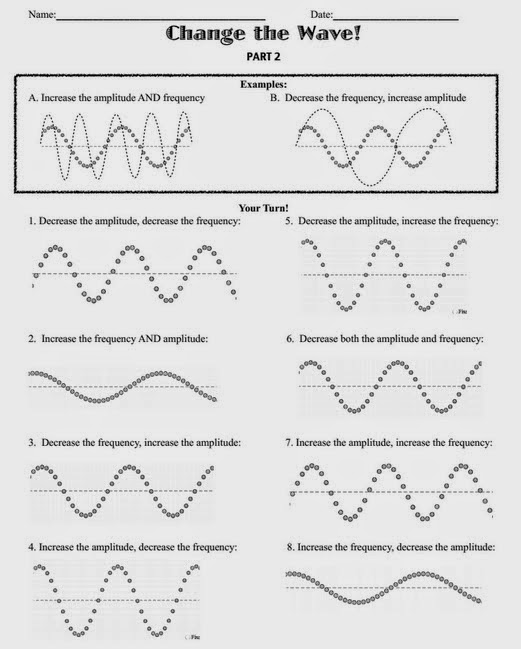I really want my kids to be good at amplitude and frequency. This lesson was tricky for them. It really made them think. But I think that's why I really liked this lesson. It was hard! It was tricky! They actually had to use their brains! THAT'S AWESOME.
We did lots of examples as a class first. I modeled it a few times, and then I had them come up to the smart-board to give it a go.
––––––––––––––––––––––––––––––––––––––––––––––
Teaching Secret for Success:
It's really important to get the kids to practice the skill as a group (guided practice!!) before you give them the worksheet. This way you can immediately identify and address any severe misconceptions they all have and how to fix it.
––––––––––––––––––––––––––––––––––––––––––––––
I guess my professors in college really knew their stuff when they drilled into our brains the following lesson outline:
I do -- We do -- You do.
i.e.
Model - Lead - Test.
i.e.
The kids watch me do it, the kids do it with me, then the kids show their stuff and do it on their own.
––––––––––––––––––––––––––––––––––––––––––––––
When kids come up and do it with me, you can see that when I say "increase the amplitude," they're only increasing the crest and not deepening the trough. Or other problems. Then the kids like to come up when someone doesn't get it right and try to fix it. It actually worked out well that no one's feelings got hurt, because even if they got it wrong one time, the next time they were the one wanting to fix someone else's mistake. This wouldn't work in ever class. The dynamics between your students is everything.
Here's the worksheet we did today. Again, it caused them to really think about what amplitude and frequency really meant, and how to increase or decrease both.
Click below to get the worksheet.



I just came across this page! My students are also having a difficult time with parts of a wave and drawing waves, so this is a great resource!! Thank you so much!!
ReplyDelete